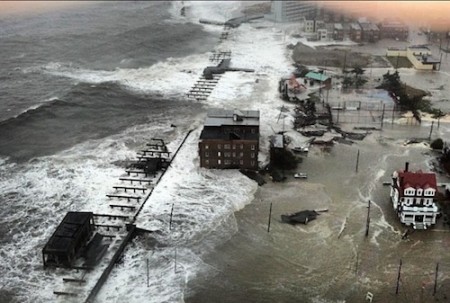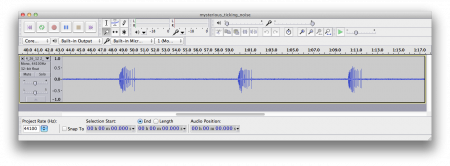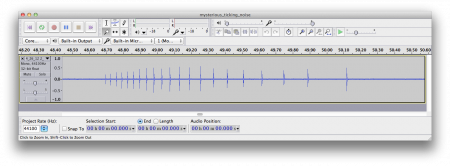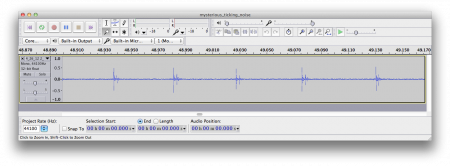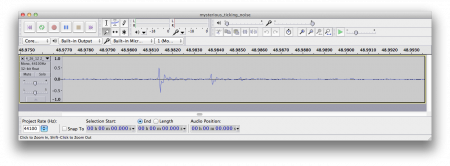BAILIFF
All rise. The Imaginary Court of the Internet is now in session. The honorable Judge Mumble K. Mumbles presiding.
The JUDGE enters and sits behind the bench.
JUDGE
Be seated. Prosecution: Are you ready to call your first witness?
PROSECUTION
Yes, your honor. The prosecution calls Donna Laframboise.
DONNA LAFRAMBOISE stands and makes her way to the witness stand.
COURT CLERK
(standing before Laframboise)
Do you swear to tell the truth, or at least something more or less consistent with your public statements, so help you the Internet?
LAFRAMBOISE
I do.
COURT CLERK
Please be seated.
PROSECUTION
Ms. Laframboise, what is your occupation?
LAFRAMBOISE
I am a journalist, author, and photographer.
PROSECUTION
What is your most recent book?
LAFRAMBOISE
Its title is “The Delinquent Teenager Who Was Mistaken for the World’s Top Climate Expert.”
PROSECUTION
That’s quite a mouthful.
LAFRAMBOISE
Yes. Most people just call it “The Delinquent Teenager.”
PROSECUTION
When was the book published?
LAFRAMBOISE
October 2011.
PROSECUTION
Who is “the delinquent teenager” referred to in the title?
LAFRAMBOISE
The United Nations climate panel, the IPCC. The book is an exposé of the IPCC.
PROSECUTION
And IPCC stands for?
LAFRAMBOISE
Intergovernmental Panel on Climate Change.
PROSECUTION
And what does this organization, the IPCC, actually do?
LAFRAMBOISE
It surveys the scientific research on climate change, decides what it all means, and writes an ongoing series of reports. These reports are informally known as the “Climate Bible.”
PROSECUTION
Ms. Laframboise, by your book’s title do you mean to suggest that this important and prestigious international organization is somehow similar to a “delinquent teenager”?
LAFRAMBOISE
Yes, I’m afraid it is.
PROSECUTION
But the IPCC is made up of the world’s top scientists, isn’t it?
LAFRAMBOISE
I used to think so. But in researching my book I discovered that the truth is very different. Some of the people in charge of writing the Climate Bible are no better than graduate students. I found examples of people who at the time they were working on it were 10 years or more away from completing their PhDs. Others were employees of activist organizations, like Greenpeace or the World Wildlife Fund.
PROSECUTION
But Ms. Laframboise, how is it possible that such people would be in charge of writing such an important report?
LAFRAMBOISE
Well, what you have to realize is that the IPCC is a political organization. As a result, many of the people occupying these important positions in it were appointed for political reasons. Do they represent the right country? Are they of the right gender? Insiders at the IPCC, in an anonymous survey, used words like “they’re not qualified”, “not competent”, “out of their intellectual depth.” Those are the sorts of people being tasked with writing IPCC reports.
DEFENSE
Objection, your honor. Hearsay.
PROSECUTION
Ms. Laframboise has conducted extensive investigation of the IPCC, and has direct knowledge of how its membership is selected.
JUDGE
Objection sustained. The jury will disregard the witness’s last response. Ms. Laframboise, please refrain from offering testimony on behalf of people not present at trial.
PROSECUTION
Let’s try again. Ms. Laframboise, as a result of your research, how would you characterize the process whereby the IPCC members are chosen?
LAFRAMBOISE
It is a very political process. The selection criteria include things like the member’s nationality or gender. Leading scientists may be excluded simply because their views about climate change differ from those of the IPCC leadership.
PROSECUTION
Were you surprised to learn these things about the IPCC, Ms. Laframboise?
LAFRAMBOISE
I was. The reputation the IPCC enjoys in the media, and in the public mind, has been quite high. The reality, sadly, is very different.
PROSECUTION
Why do you think these shocking facts about the IPCC are not more widely known?
LAFRAMBOISE
Well, I think going back to the 1970s, many in the media have basically seen themselves as being on the side of the environmental movement. Journalists have tended to be very uncritical of anyone working on behalf of the environment. So an organization like the IPCC, which is perceived as being part of that tradition, has not been subject to any real scrutiny.
PROSECUTION
So your book represents the first time such scrutiny has been applied to the IPCC?
LAFRAMBOISE
Yes. As an investigative journalist, every time I’ve taken a look at one of these claims about the IPCC, every time I’ve turned over a rock, I’ve found a scandal under that rock. It really is quite amazing.
PROSECUTION
You said your book was published last October, Ms. Laframboise. What sort of response did it receive?
LAFRAMBOISE
Overall, I would say the response has been positive.
PROSECUTION
But not universally so?
LAFRAMBOISE
(smiles)
No, not universally.
PROSECUTION
Which brings us to the defendant, Peter Gleick. Didn’t he write a review of your book on Amazon.com?
LAFRAMBOISE
Yes, he did.
PROSECUTION
Your honor, I would like to enter into evidence Prosecution Exhibit #1, Peter Gleick’s review of The Delinquent Teenager at Amazon.com.
DEFENSE
Objection, your honor. Prosecution has presented no reason for believing that this review, by Amazon user “PGleick”, was actually written by the defendant.
PROSECUTION
Your honor, if you will refer to the exhibit, you will see that the review is associated with a user identified as Peter Gleick of Berkeley, California. The account is associated with a “Real Name” badge, which according to Amazon is an indication that they have verified that the user possesses a credit card in that name. In addition, as will become clear later on during our case, this review played a prominent role in interactions between the defendant and members of the climate-science skeptics community, during the course of which the defendant never sought to disavow authorship of it.
JUDGE
For the purposes of this imaginary trial, I will accept that this item was, in fact, written by the defendant. Objection overruled.
PROSECUTION
Ms. Laframboise, at the time he posted his review of your book, what did you know about the defendant, Peter Gleick?
LAFRAMBOISE
Well, I knew he was a climate scientist. He is president of the Pacific Institute, an organization in Berkeley, California, where he has been involved in climate research for some time. My understanding is that his particular speciality is water issues, but he has also been a prominent voice in advocating for government action on climate change.
PROSECUTION
This review by the defendant: When was it posted? Was it relatively soon after your book came out?
LAFRAMBOISE
Yes, in the first few days, on October 16, 2011.
PROSECUTION
And what did the defendant say about your book?
LAFRAMBOISE
(smiling)
He didn’t like it.
PROSECUTION
Really? What were his objections?
LAFRAMBOISE
He called it “a stunning compilation of lies, misrepresentations, and falsehoods about the fundamental science of climate change.” He wrote that no one need bother to read it, since it contained nothing new, simply lots of “pseudoscience and misrepresentations of science.”
PROSECUTION
But I thought your book was an exposé about the role of politics at the IPCC, not about climate science itself.
LAFRAMBOISE
Yes, that is correct.
PROSECUTION
It sounds like Gleick, a prominent scientist, did not take a very scientific approach to reviewing your book. How do you account for his making such an inaccurate attack on it?
LAFRAMBOISE
I really can’t account for it.
PROSECUTION
Tell me, Ms. Laframboise, how do you respond to these inaccurate charges Gleick made against your book?
LAFRAMBOISE
We need to have a professional, courteous, grown-up conversation about the IPCC. I think it is remarkable that this organization has been around for 22 years, has won a Nobel Peace Prize, is so important and influential, and yet mine is the first book to take a close and critical look at it. If others wish to follow in Gleick’s footsteps and declare that no one needs to read my book, they are welcome to do so. But I don’t think the average person is impressed by that sort of behaviour.
PROSECUTION
Ms. Laframboise, as you are probably aware, this trial concerns a number of actions -- dishonest, unethical, and perhaps even criminal in nature -- that the defendant is alleged to have taken some months after his harshly negative and inaccurate review of your book. Some of those actions he has confessed to, calling them “a serious lapse of professional judgement and ethics”; others he denies. This trial will focus in large part on whether or not those denials are believable. But setting that question aside, what conclusions do you draw from the actions to which he has admitted?
LAFRAMBOISE
Well, I think there are many ways to win the hearts and minds of the public. But anyone who feels the need to resort to dishonesty and unethical behavior would seem to have little faith in their own evidence.
PROSECUTION
In the wake of this scandal, some climate activists have argued that what Gleick did really wasn’t that bad. They say he acted dishonestly and unethically only because he cares so much about global warming, and that the importance of his cause excuses his actions. How do you respond to that?
LAFRAMBOISE
I’m horrified by the moral vacuity demonstrated by those who argue that Gleick’s behaviour is no big deal. An alarming number of them appear to be employed in the sciences. But regardless of their background, I have a question for each of those people: Where do you draw the line? I understand that you think things like lying and stealing and misleading are OK so long as they help advance a good cause. What else is acceptable? Old fashioned burglary? Arson? Car bombs? Where is the line?
PROSECUTION
Thank you, Ms. Laframboise. No more questions, your honor.
JUDGE
The defense may cross-examine.
DEFENSE
(standing)
Thank you, your honor. Ms. Laframboise, if I understand you correctly, one of the shocking things you have discovered is that the IPCC, an international body, includes people from various parts of the world, and of various genders. Is there anything wrong, in your view, with not being from North America, or not being a particular gender?
LAFRAMBOISE
Of course not, as long as the individual is qualified. My sense, though --
DEFENSE
(interrupting)
Please just answer the question, Ms. Laframboise. And would you agree that given the wide-ranging potential impacts of climate change, and the fact that all parts of the world and all genders are at risk from it, that having those groups represented on the panel is important?
LAFRAMBOISE
As long as the panel includes the most-qualified people, yes. In this case, though, it does not.
DEFENSE
Yes, you’ve made your opinions about that clear. Another of the shocking things your investigations have uncovered, I believe you said, is that the IPCC’s membership has sometimes included one or more graduate students who had not yet received their PhDs. Is that correct?
LAFRAMBOISE
Yes.
DEFENSE
You are certainly aware, Ms. Laframboise, that the IPCC does not actually do any climate research itself. It merely summarizes the work that has been done by the world’s climate scientists. Given that, why do you believe that a graduate student, who might well have many years of relevant scientific experience, could not perform that role?
LAFRAMBOISE
The IPCC authors do not just summarize. Climate science is a complex and rapidly evolving field, and the IPCC’s authors, in particular the lead authors, are deciding which research is the most compelling. They have the power of saying, in effect, “this is what the world’s climate scientists believe, this is what we think is going to happen in the future, and this is what we as humans should do in response.” We are depending on their judgement, which makes their qualifications absolutely crucial.
DEFENSE
Let’s talk about this question of qualifications, then. Let’s talk about the expertise needed to reach valid judgements about this “complex and rapidly evolving” area of science. I believe you described yourself as a “journalist, author, and photographer.” Is that correct?
LAFRAMBOISE
Yes.
DEFENSE
Do you have a PhD, Ms. Laframoise?
LAFRAMOISE
No.
DEFENSE
But you at least have a graduate degree of some kind? A Master’s degree, perhaps?
LAFRAMOISE
No.
DEFENSE
Well, do you at least have an undergraduate degree in some scientific field?
LAFRAMBOISE
No. I have a college degree, but not in a scientific field. But I also have have many years of experience as an investigative reporter researching government --
DEFENSE
(interrupting)
What? Not even an undergraduate degree in science? Any science at all? Please tell us, Ms. Laframboise, what field was your degree in?
LAFRAMBOISE
I graduated -- with honors -- with a degree in women’s studies from the University of Toronto.
DEFENSE
Women’s studies. Women’s studies. A reasonable person might conclude, Ms. Laframboise, that your own opinions about climate science are significantly less expert even than those of this hypothetical IPCC graduate student of whom you are so critical.
LAFRAMBOISE
Not hypothetical. There have been graduate students --
DEFENSE
Yes, yes. I am willing to stipulate that among the many scientific experts who have authored the IPCC reports there have been at least a few who had not yet completed their PhDs. But I’m more concerned about this question of your own expertise. Isn’t it true, Ms. Laframboise, that despite your characterization of your book as merely being about the politics of the IPCC, that in fact your book makes numerous claims that the IPCC has got the climate science wrong? And isn’t it true that it is these opinions of yours, based on no scientific background at all, that have caused many experts -- including Dr. Gleick -- to dismiss your attacks on the IPCC as scientifically naive?
LAFRAMBOISE
No.
DEFENSE
No?
LAFRAMBOISE
No, it is not true that it is my lack of scientific credentials that causes them to dismiss my book.
DEFENSE
Well then, please enlighten us, Ms. Laframboise. In your view, what is it that causes them to dismiss it?
LAFRAMBOISE
It is their own arrogance, their own belief, like the delinquent teenager of my title, that their lofty position makes them immune to criticism. The belief that they can do what they want, say what they want, with no accountability, and the rest of us must simply accept it.
DEFENSE
You find that objectionable.
LAFRAMBOISE
Of course. Anyone would, and should.
DEFENSE
Well, at least we’ve established that you find it objectionable. Tell me, Ms. Laframboise: You described yourself as an author. I believe your attack on the IPCC was referred to earlier as your “latest” book. How many other books have you written, besides this one?
LAFRAMBOISE
One.
DEFENSE
Just one? In all the time since you graduated with your degree in women’s studies, all that time as a journalist and author, you’ve written only one other book? When was that book published?
LAFRAMBOISE
In 1996.
DEFENSE
More than 15 years ago. What was its title?
LAFRAMBOISE
“The Princess at the Window: A New Gender Reality”
DEFENSE
Well, at least it sounds like this was a book closer to your own area of expertise. Isn’t it true, Ms. Laframboise, that that book, not unlike your latest one, consists of a lengthy rant in which you take prominent people to task for a long list of failings that you, with your women’s studies degree, feel qualified to lecture them about?
LAFRAMBOISE
I would not call it a rant. The book was critical of what I saw at the time as the failings of feminist leadership.
DEFENSE
Saw at the time? Has the passage of time changed your views about the failings of feminist leadership? Perhaps you have realized that the things you asserted so stridently were more the product of your own need to take down those in authority, to show that you were better than them, than with any actual wrongdoing on their part?
LAFRAMBOISE
The person who wrote that book has continued to evolve. I’m sure there are passages I’d write differently today. Nevertheless, I stand by the book’s main argument: that the North American women’s movement of the 1980s and 1990s had become “extremist, self-obsessed, arrogant and intolerant.”
DEFENSE
Well, perhaps your argument in that case did have some merit. Certainly the feminist movement, and the women’s studies programs it has spawned, have produced their share of arrogance and intolerance. No more questions, your honor.
Defense counsel sits down.
JUDGE
Prosecution? Do you wish to redirect?
PROSECUTION
Yes, your honor. Ms. Laframboise, the defense seems to be of the opinion that you are claiming that your academic achievements studying the role of gender in society are directly relevant to a scientific understanding of climate change. Is that, in fact, a claim you are making?
LAFRAMBOISE
Of course not.
PROSECUTION
In fact, Ms. Laframboise, haven’t you spent much of the last two decades working as an investigative reporter, uncovering wrongdoing by powerful institutions?
LAFRAMBOISE
Yes.
PROSECUTION
For example, you wrote extensively about the case of Guy Paul Morin, a Canadian who had been convicted and imprisoned for a horrific murder. After years in prison, Morin was proven innocent by DNA testing, released, and compensated financially by the Canadian government. Isn’t that correct?
LAFRAMBOISE
Yes.
PROSECUTION
And isn’t it true that in that case, a government inquiry eventually vindicated your reporting, revealing that, in fact, there had been police and prosecutorial misconduct, and misrepresentation of forensic scientific evidence?
LAFRAMBOISE
Yes.
PROSECUTION
And isn’t it true that the skills you acquired in investigations like that are what have allowed you to uncover and document the political failings and misrepresentations of scientific evidence at the IPCC that are described in your book?
LAFRAMBOISE
Yes.
PROSECUTION
Thank you, Ms. Laframboise. Nothing further for this witness, your honor.
JUDGE
You may step down, Ms. Laframboise.
Laframboise leaves the witness box.
JUDGE (CONT.)
I think we could all use a break. Unless I hear any objection, I’m inclined to adjourn for the day. No one? Very well.
The Judge bangs the gavel.
JUDGE (CONT.)
Court is adjourned until the operator of this blog has time to write the next installment.
